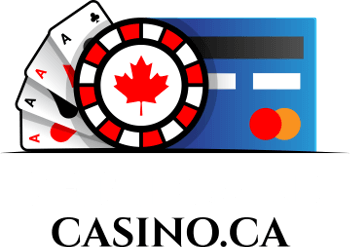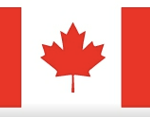How to Read Sports Betting Odds & Moneylines
Easy Tutorial on US Moneyline Odds with EU & UK Conversions
 Sports betting is a popular pastime enjoyed by millions of people all over the world. It’s a simple concept. Choose something you think will happen in a game – whether it be a team to win, a point spread to be achieved, or a player to score first – and place a bet on it. If you’re right, you win money. If not, you lose. So simple! But if you don’t know how to read the odds for those bets, you could become very confused, very quickly. So confused, in fact, that some people get turned off the idea of sports betting entirely.
Sports betting is a popular pastime enjoyed by millions of people all over the world. It’s a simple concept. Choose something you think will happen in a game – whether it be a team to win, a point spread to be achieved, or a player to score first – and place a bet on it. If you’re right, you win money. If not, you lose. So simple! But if you don’t know how to read the odds for those bets, you could become very confused, very quickly. So confused, in fact, that some people get turned off the idea of sports betting entirely.
Don’t let this happen to you, especially if you’re a genuine sports fan. Yes, the odds can be confusing at first. It doesn’t help that there are three odds formats you could come across – US Moneylines, EU Decimals and UK Fractions. In this quick tutorial, we’ll teach how to read sports betting odds and moneylines with ease, and how to convert them between the different formats.
Once you learn how to read US, UK and EU odds, most online sportsbooks, like CO BetRivers, will let you choose which format you want to view the lines in.
Easy Tutorial on US Moneyline Odds |
|
Moneyline is the term used to identify American odds. They are called “moneylines” because the number you see determines the amount of money you have to put on the line to win achieve a specified profit. The figure will either be represented as a negative integer (-), or a positive one (+). If neither – or + is shown, it’s considered a + by default, the same as any standard display of numbering.
To reiterate…
|
Decimal Odds – Converting US & EU Odds |
|||||||||||||||||||||||||||||||||||||||||||||||||||||||||||||
|
The decimal odds format used by most European countries is actually the preferred odds format of the global majority. It is, for many sports fans, the easiest odds to read and comprehend. The number, displayed as a decimal, represents a multiplier. All you have to do is multiply your bet size by the decimal odds, and that’s how much you stand to get back if you win. That’s not the profit margin alone, but rather the total return. The return is the original bet plus the profit won. So, the formula is…
or
Let’s look at a few quick examples:
The most important thing to remember is that decimal odds of 2.0 or greater will return a 100% profit or greater, equal to positive moneyline odds (+100 or better). Decimal odds of 1.99 or below will return a profit below 100%, equal to negative moneyline odds. So, 2.0 and up is positive, 1.99 and below is negative. Converting US to EU OddsConverting US moneylines to decimal odds is as easy as dividing by 100 and adding 1. The trick is knowing what order to write the formula, and remembering to drop the positive/negative symbol.
Let’s take a look at some examples:
Converting EU to US OddsThe formula for this is the opposite of the one above. You must subtract 1, then multiply the odds by 100, or multiply 100 by the odds, depending on whether the decimal is 2.0 or above, or 1.99 or less.
Let’s take a look at some more examples:
|
Fractional Odds – Converting US & UK Odds |
||||||||||||||||||||||||
|
Fractional odds are the preferred choice of British punters and UK sportsbooks. They are based entirely on fractions. If you hated fractions in math class, you may want to avoid this one. Or, if you found them easy to work with, you may love them. Either way, here’s how fractional odds works. UK odds depict one number over another, such as 2/1, or 1/4. The easiest way to explain their meaning is to say:
So, if the odds are 2/1, you will “bet 2 to win 1”. Betting 2 to win 1 means we must risk more than we stand to win, so we know this would become a negative moneyline. If the odds are reversed, 1/2, you will “bet 1 to win 2”. That’s a higher payout for a smaller bet, therefore we know it’s equivalent to a positive moneyline. Converting UK to US OddsThe first step is to turn that fraction into a decimal. From there, you can either convert to EU odds by simply adding 1, then convert to US by using the ‘EU to US Odds’ chart above, or use the following method to convert straight from fractional to moneyline odds. Converting fractions to decimals is easier than a lot of people think, but you may need a calculator to do it. The equation is already there for you. If the fraction is 3/4, then divide 3 / 4 = 0.75. The equation for 5/2 would be 5 / 2 = 2.5. The next step will depend on whether the original fraction was 1/1 or greater (first number is same as or higher than second number), or less than 1/1 (first number is lower than second number).
Some examples…
Converting US to UK OddsReversing the process is more difficult, because it’s easier to turn a fraction into a decimal, than a decimal into a fraction. It requires dividing each number by the greatest common factor (GCF). The hard part can be determining what the GCF is. For instance, in the fraction 50/100, we can easily determine 50 is the largest number both halves of the fraction can be divided by, therefore 50 is the GCF. 50 / 50 = 1, and 100 / 50 = 2, so the reduced fraction is 1/2. In the example 220/100, the GCF is 20. We divide 220 / 20 = 11, and 100/20 = 5, resulting in 11/5. The ensuing formula for converting US to UK odds is:
|




